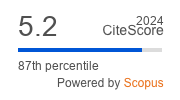Article | Open Access
| Ahead of Print | Last Modified: 26 November 2025
Does Federalism Facilitate Permanent Minipublics?
| Views: | 203 | | | Downloads: | 140 |
Abstract: Deliberative minipublics have been flourishing across the globe, but most have been conducted as one-off experiments. Only in a few cases has their use been codified in formal decisions or positive law. Notable examples include the state of Oregon in the United States, the German-speaking community in Belgium, and the city of Aachen in Germany. Strikingly, many of these cases emerge from federal, multilevel, or otherwise highly decentralised systems. This raises the questions: is multilevel governance more likely to produce recurring legally embedded minipublics, and does institutionalisation differ across levels of governance? More specifically, we investigate whether federal arrangements make it more likely that minipublics will be repeated and formally embedded, and how the mode of institutionalisation differs across contexts. We begin by outlining a conceptual framework to clarify what counts as a permanent minipublic. We then advance a preliminary, exploratory theoretical expectation linking institutional permanence to federal and multilevel governance. Our findings suggest that while federal and multilevel systems are indeed more likely to host permanent minipublics, they do so in distinct ways—varying not only in where minipublics are embedded (local vs. regional), but also in how they are codified and the democratic functions they are designed to perform.
Keywords: democratic innovations; federalism; minipublics; multi‐level governance
Published:
Ahead of Print
Issue:
Vol 14 (2026): Towards an Innovative Democracy: Institutionalizing Participation in Challenging Times (In Progress)
© Francesco Veri, Nenad Stojanović. This is an open access article distributed under the terms of the Creative Commons Attribution 4.0 license (http://creativecommons.org/licenses/by/4.0), which permits any use, distribution, and reproduction of the work without further permission provided the original author(s) and source are credited.


